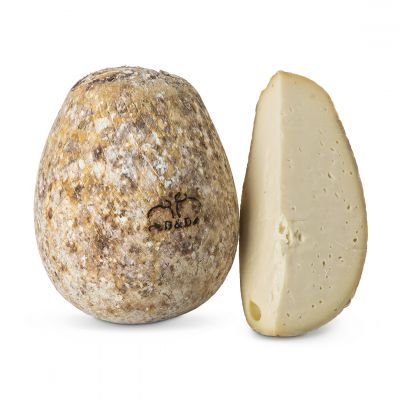A UNIQUE SPUN PASTA CHEESE THAT CELEBRATES CRAFTSMANSHIP AND THE TERRITORIES OF ALTA IRPINIA AND ALTO VULTURE: LET'S GET TO KNOW THE SCHIENA D'ASINO BETTER THANKS TO GIANLUCA DI LELLO
We are in Calitri, a small village in Campania near the border with Basilicata, home to a dairy company of excellence: Caseificio D&D. Founded in 2001 and run today by Luigi Di Cecca, the D&D company is specialised in the production of Caciocavallo and other typical local cheeses.
Its strengths are artisanal processing, the use of local milk and the link with the territory. From these values, 15 years ago, Schiena d'Asino (literally 'Donkey's back') was born, a distinctive cheese in the world of pasta filata.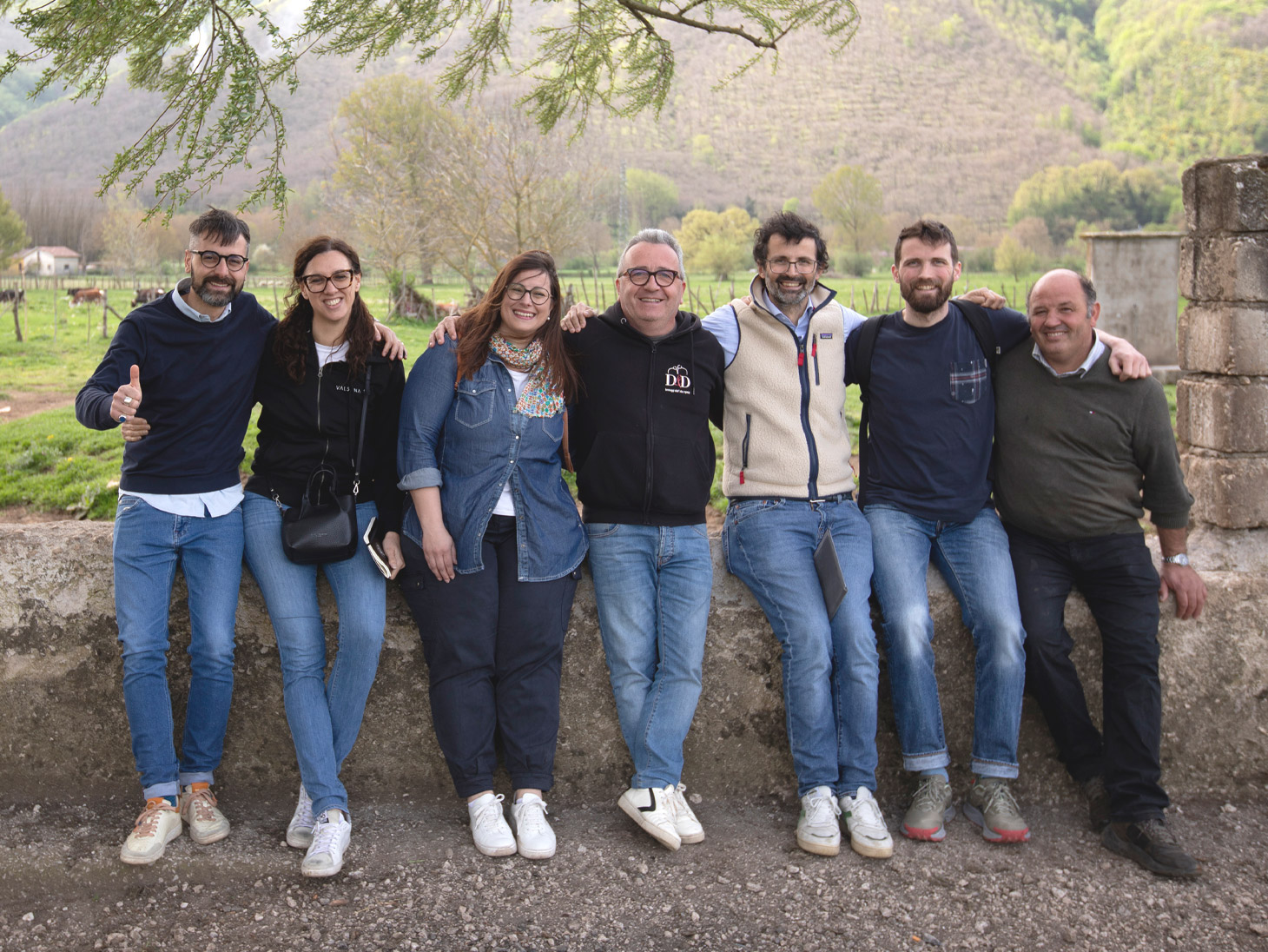
RAW MATERIAL AND TERRITORY
The secret of Schiena d'Asino lies in the mountain milk that comes from several small cowsheds in Upper Irpinia and Upper Vulture. The cows, bred between Forenza and Bisaccia at an altitude of 900 metres, feed exclusively on grass and hay, without silage. Daily production is around 18-22 litres of milk per cow, in stark contrast to the 40-45 litres of intensive farms.
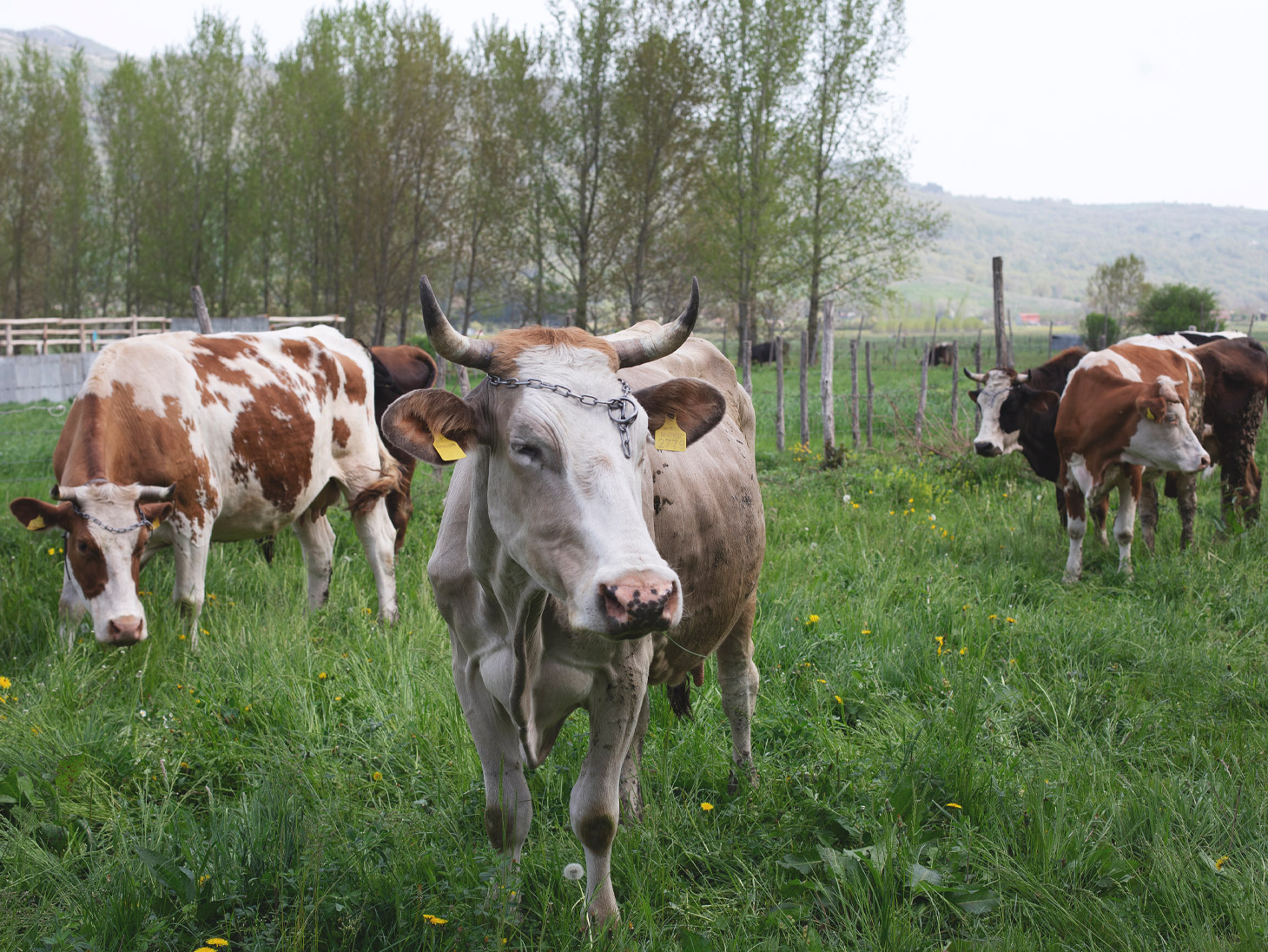
PROCESSING
The processing of Schiena d'Asino follows the method of pasta filata cheeses, but with a special feature: after the curd made from pasteurised milk (a precautionary choice by the producer as the milk comes from several small cowsheds) is broken up, a propionic ferment is used instead of the traditional whey starter used for other stretched cheeses.
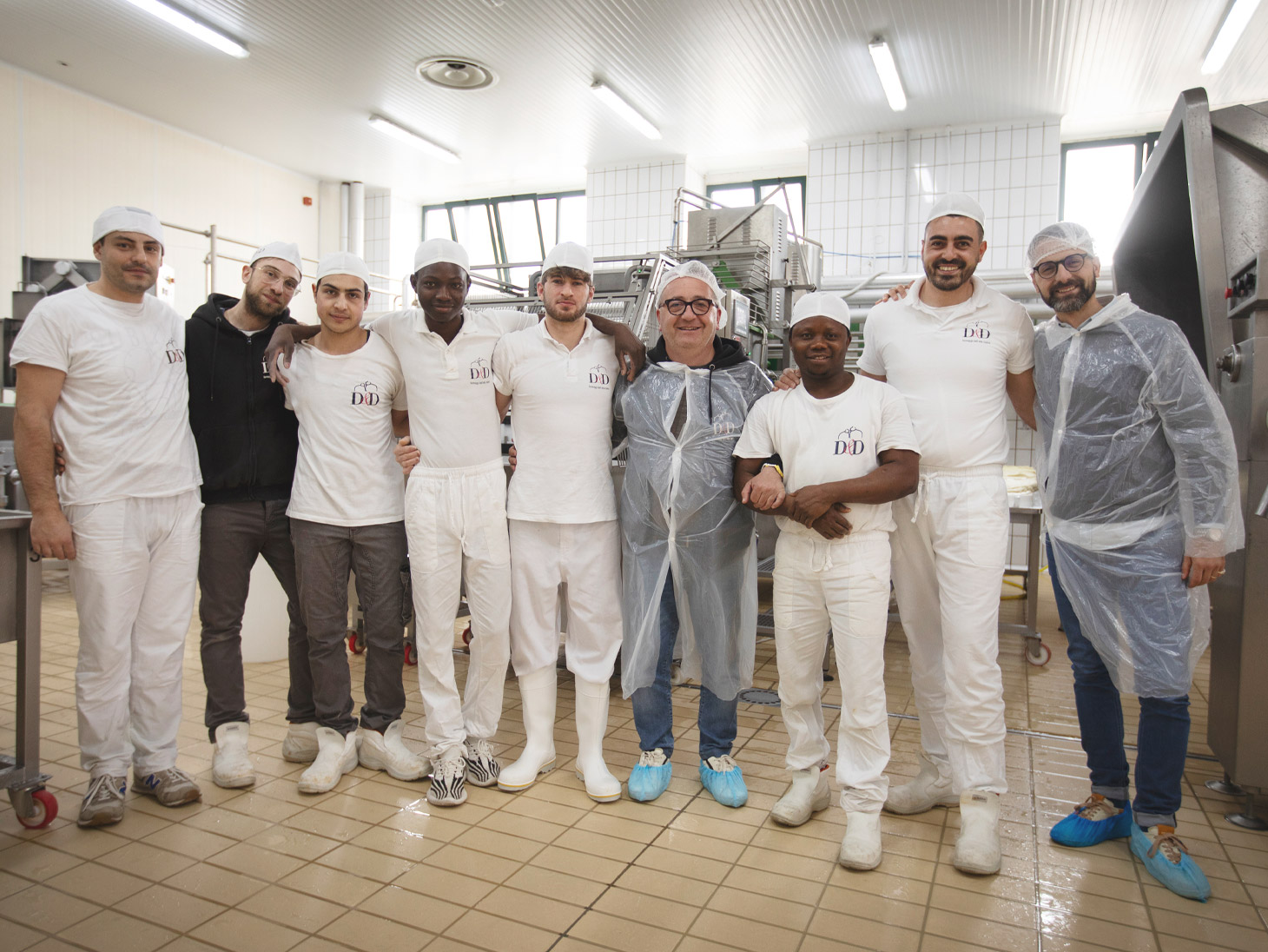
This ferment, typically used for Emmentaler, produces not only lactic acid, but also propionic acid and CO2, which foster sweetness and eye development. Once formed by hand, the Schiena d'Asino is dried and ripened in temperature and humidity controlled rooms. This process makes the cheese more elastic than other ripened cheeses such as Caciocavallo or Provolone.
The hand processing and the use of this ferment help fermentation, giving the cheese its characteristic eye formation, creaminess and unique taste.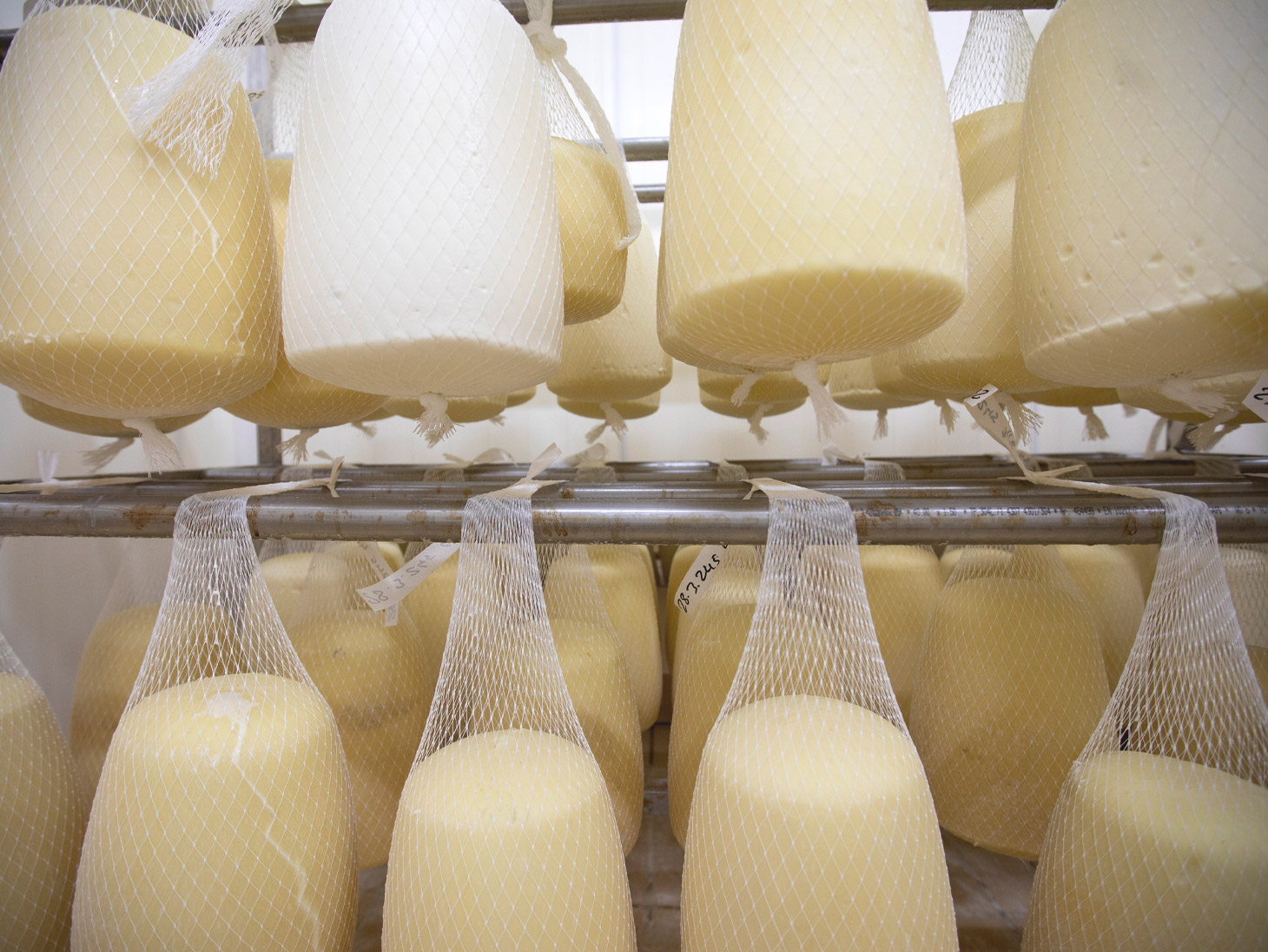
TIPS OF USE
Luigi Di Cecca recommends to further improve the product by leaving it at room temperature in the shop for 7 to 10 days to generate a natural ripening of the cheese before putting it on sale. This encourages the formation of small cracks in the rind, which are indicative of optimal ripening. Versatile and tasty, Schiena d'Asino can be eaten plain, sliced with a knife for a unique and memorable experience, or in recipes.
Here are two ideas to inspire you: which one will you choose? The first is a pizza with tomato, olives, anchovies, capers, and Schiena d'Asino, baked with shavings (made by one of our customers in Bordeaux).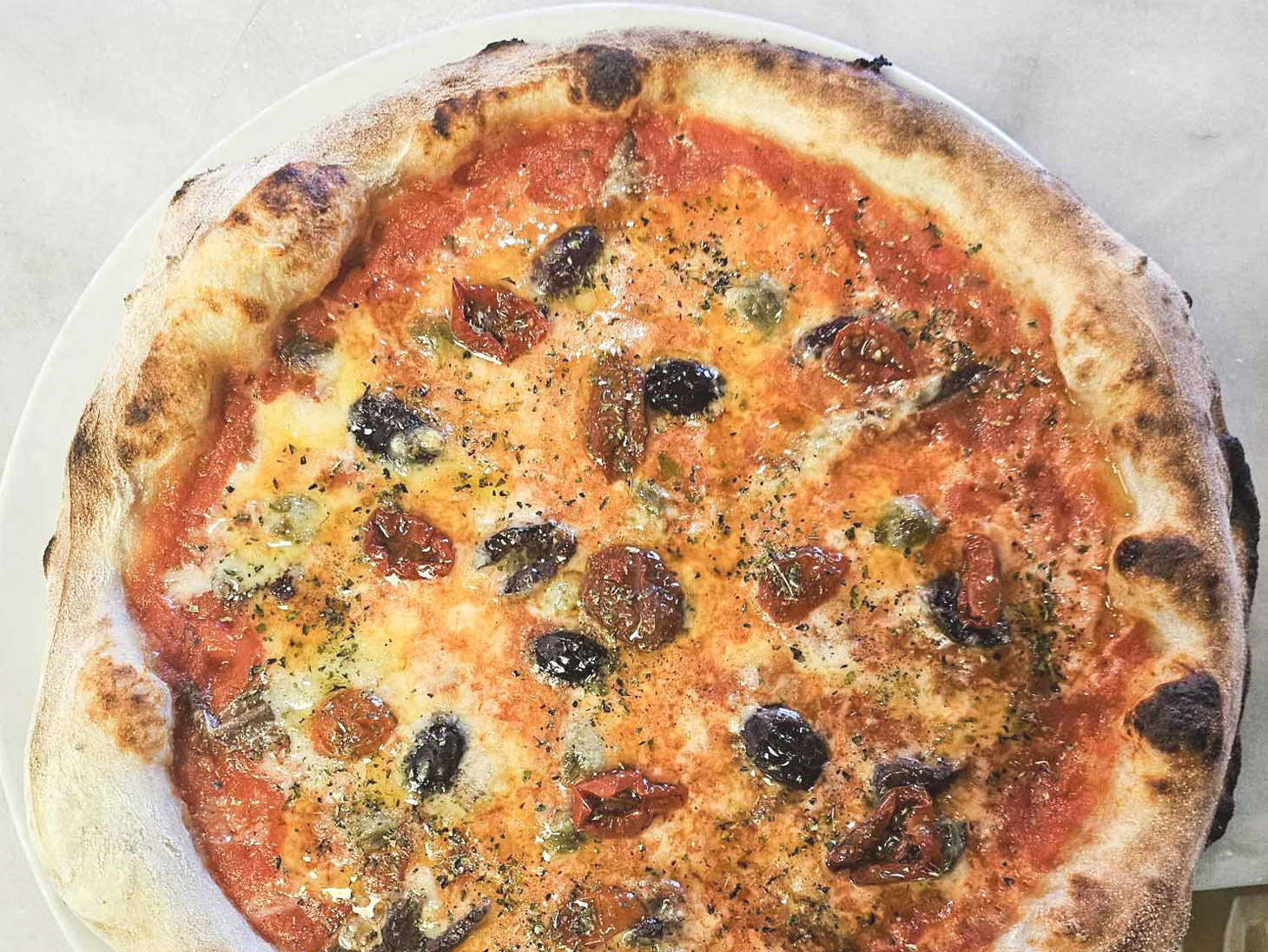
The second is Tempura: Schiena d'Asino in batter and fried, paired with a mixed salad of wild herbs and a bitter herb cream, created by a chef friend of the producer.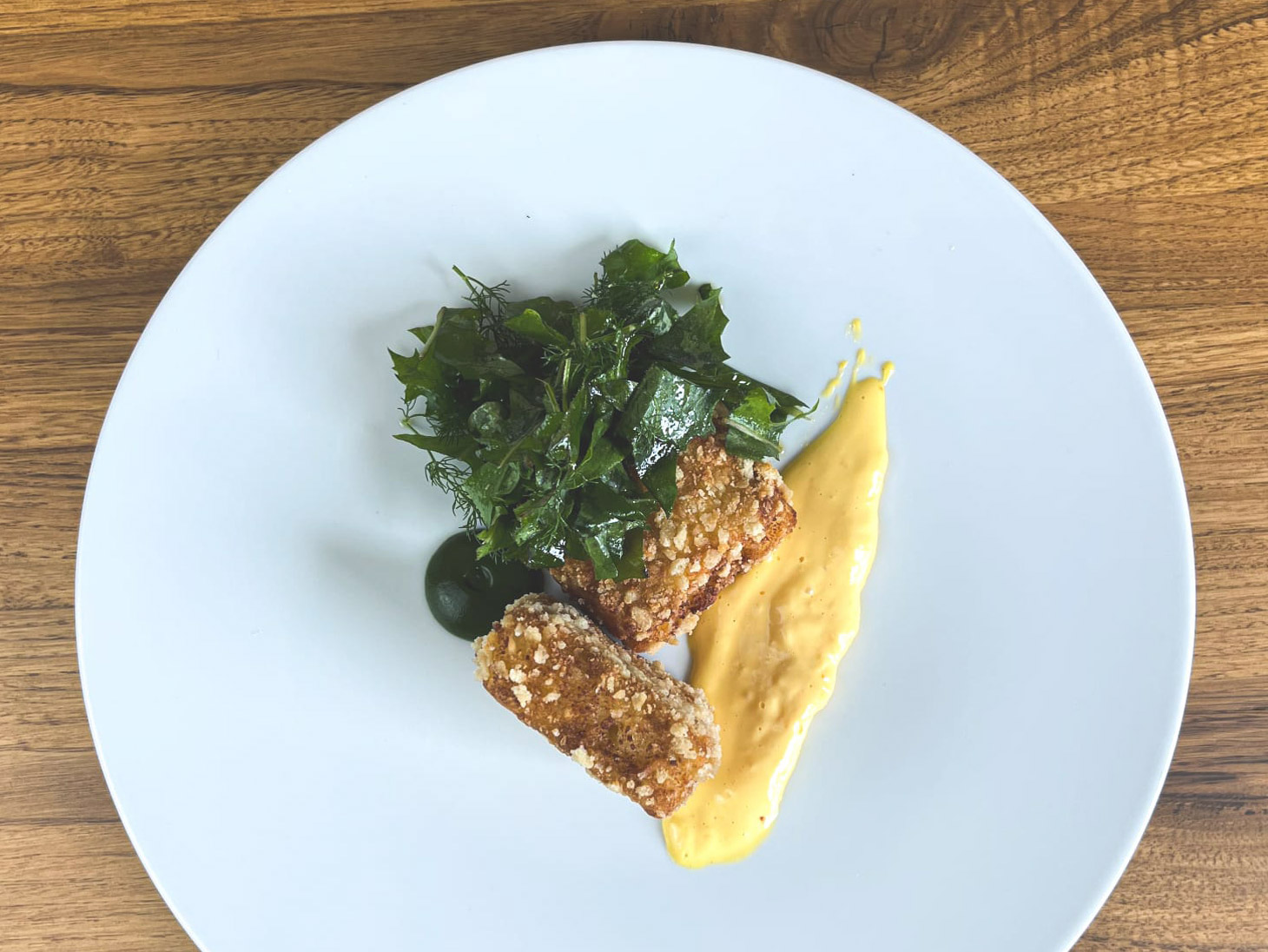
THE ORIGINS OF PASTA FILATA
A technique that comes from a far-off time, mastered by the Arabs since many centuries before Christ. How did it arrive in Italy? Some groups of Saracens, who came to Italy via the two main routes (Balkan and African), settled along the mouth of the Garigliano river between Latium and Campania, and taught the monks, who became prisoners, the technique of pasta filata.
When the Arabs were later defeated at the Battle of Garigliano (915 A.D.) by the Christian League, the freed prisoners taught their brothers and farmers the stretching technique.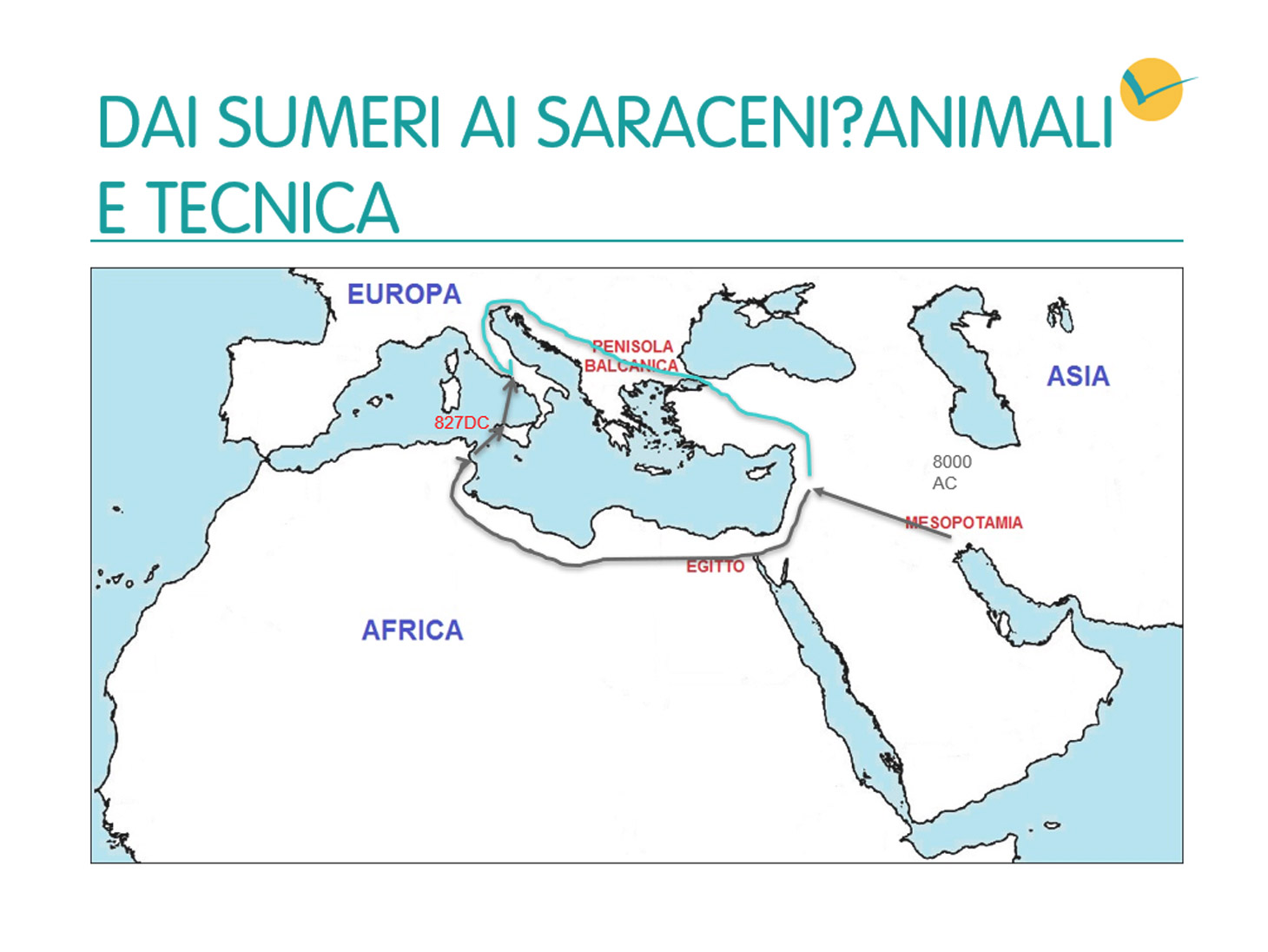
5 REASONS TO CHOOSE SCHIENA D'ASINO
- Milk collection from many small farmers in the area, therefore supporting the local economy;
- Strictly artisanal production;
- Distinctive organoleptic aspects: sweetness and lactic and fermented notes;
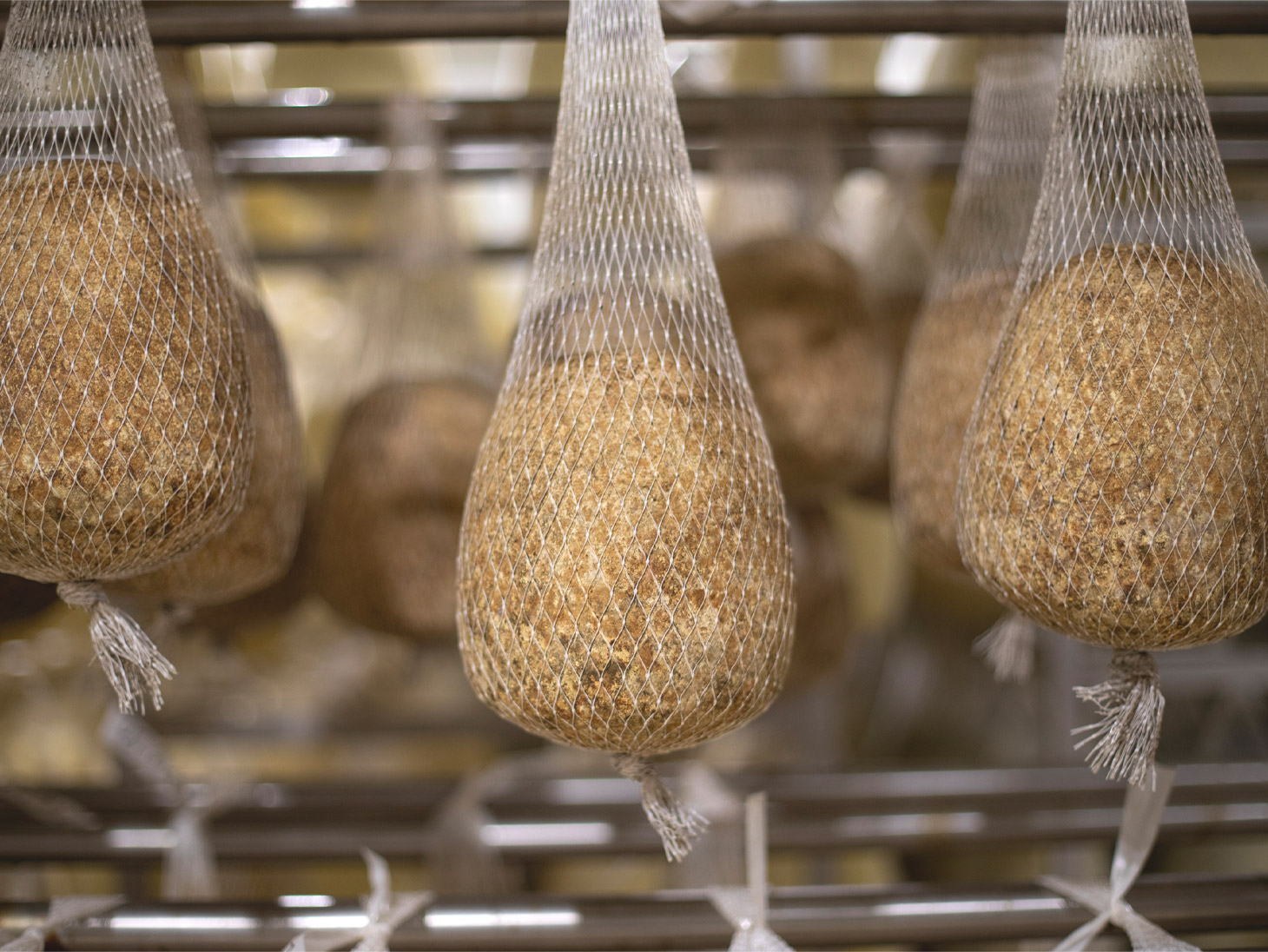
- Significant eye formation, due to the type of ferments used;
- The uniqueness of the product.




